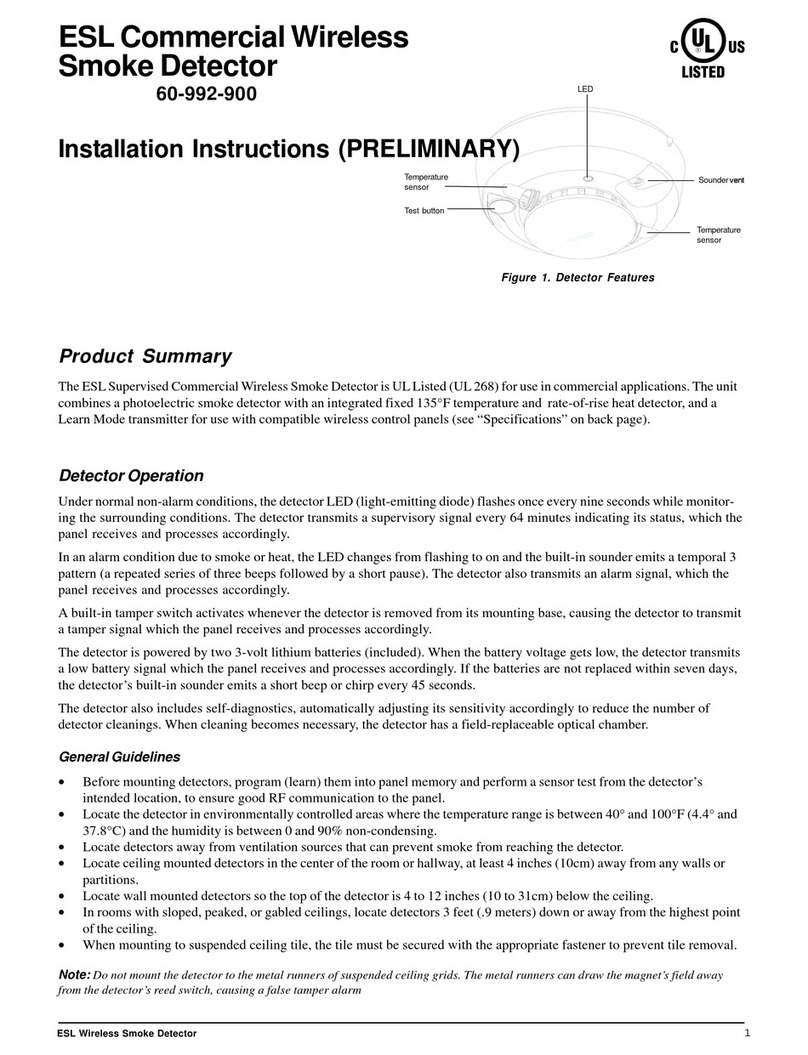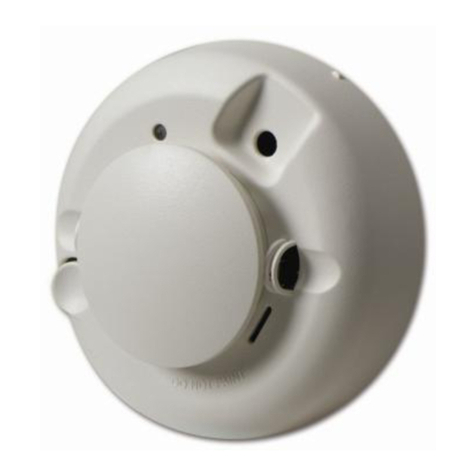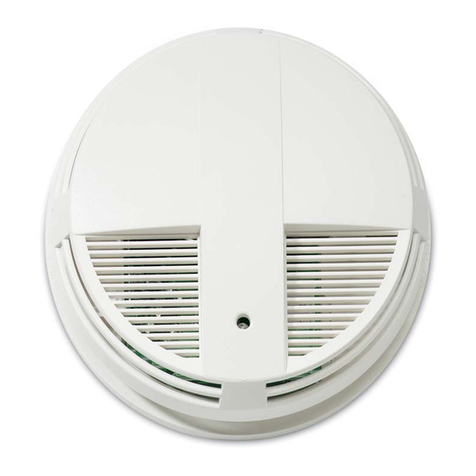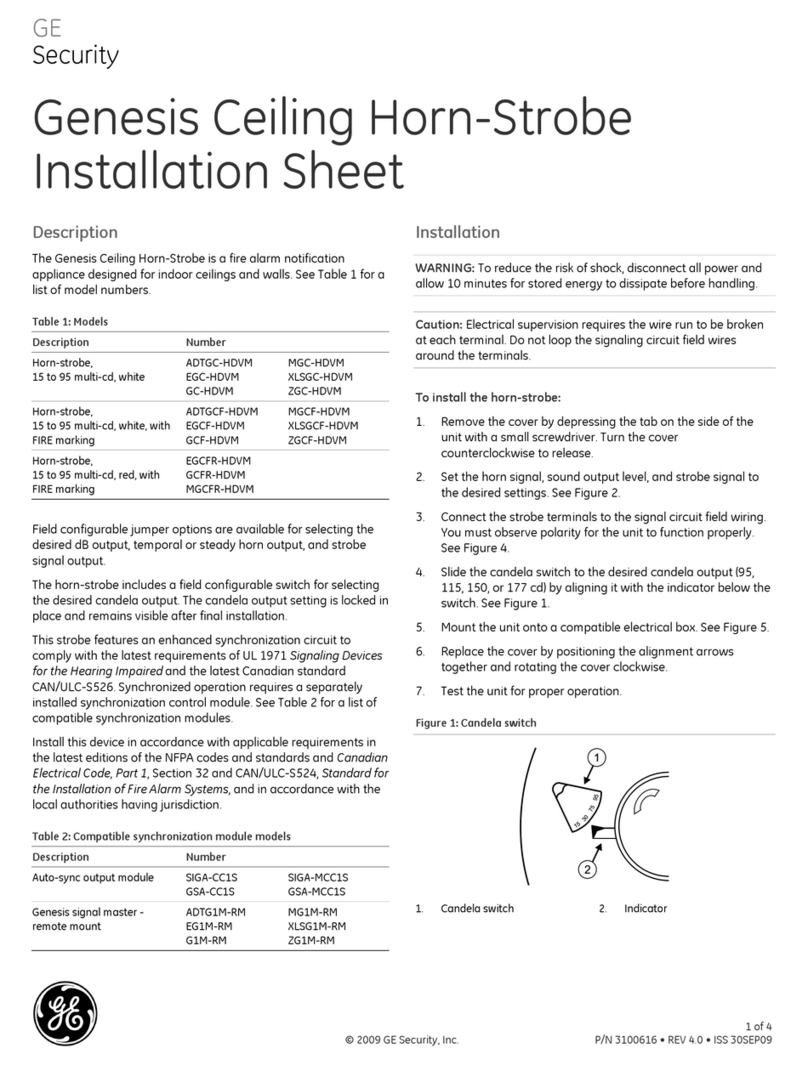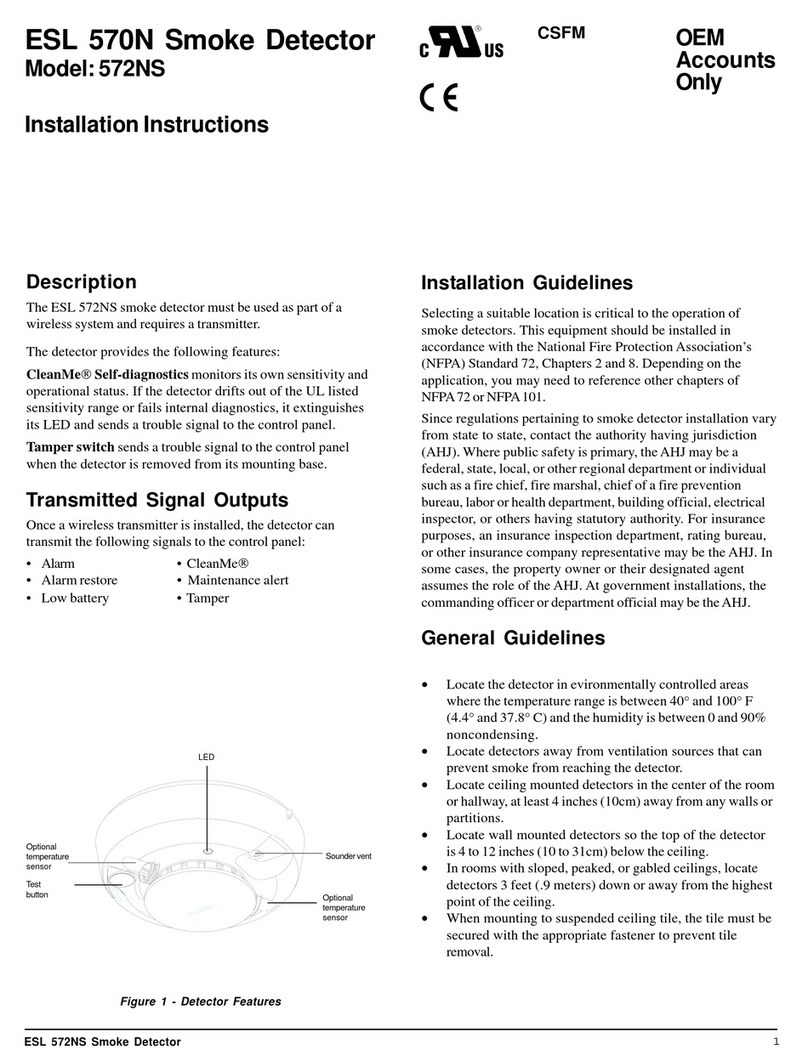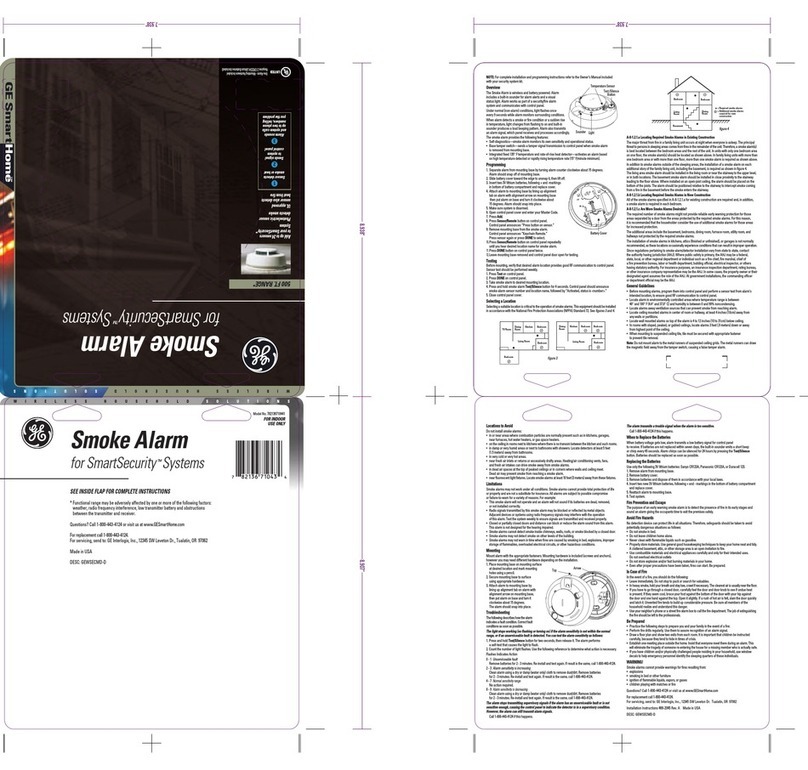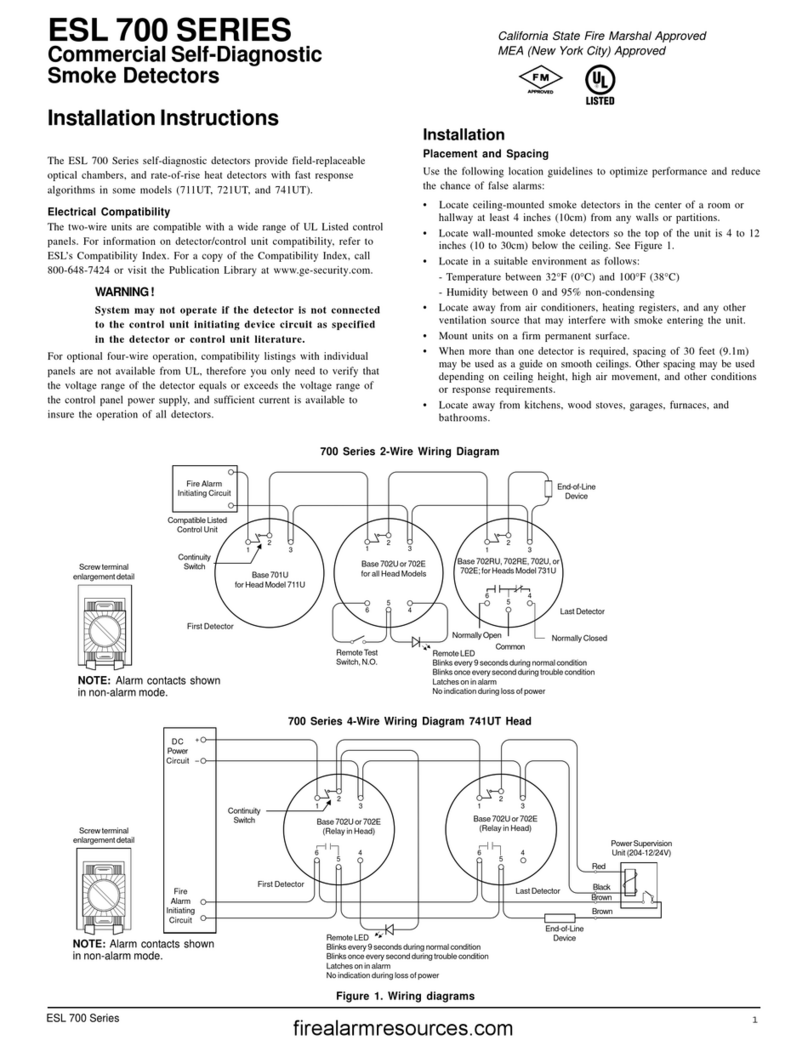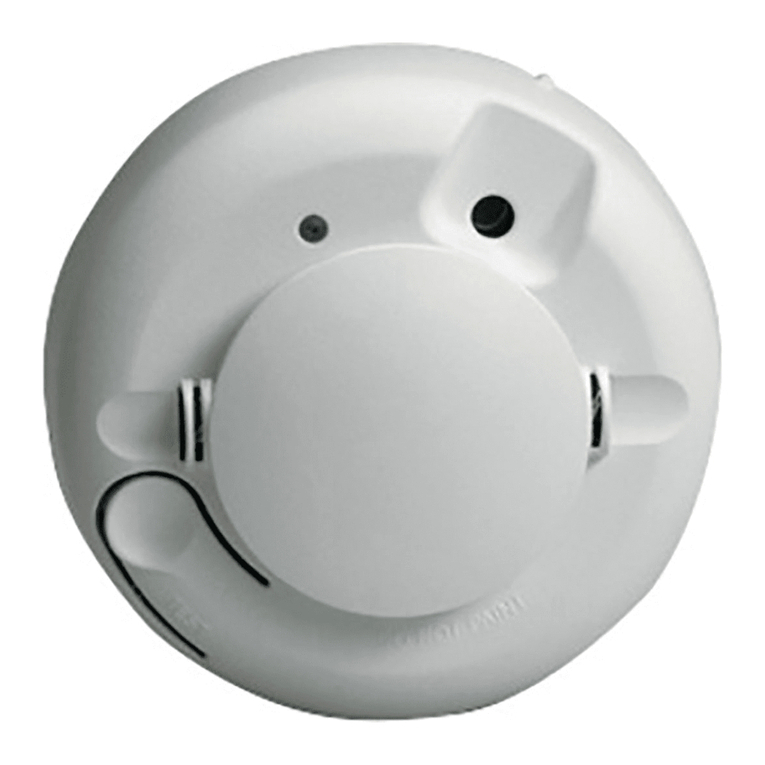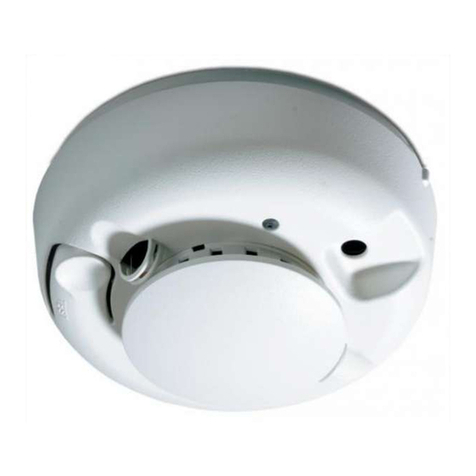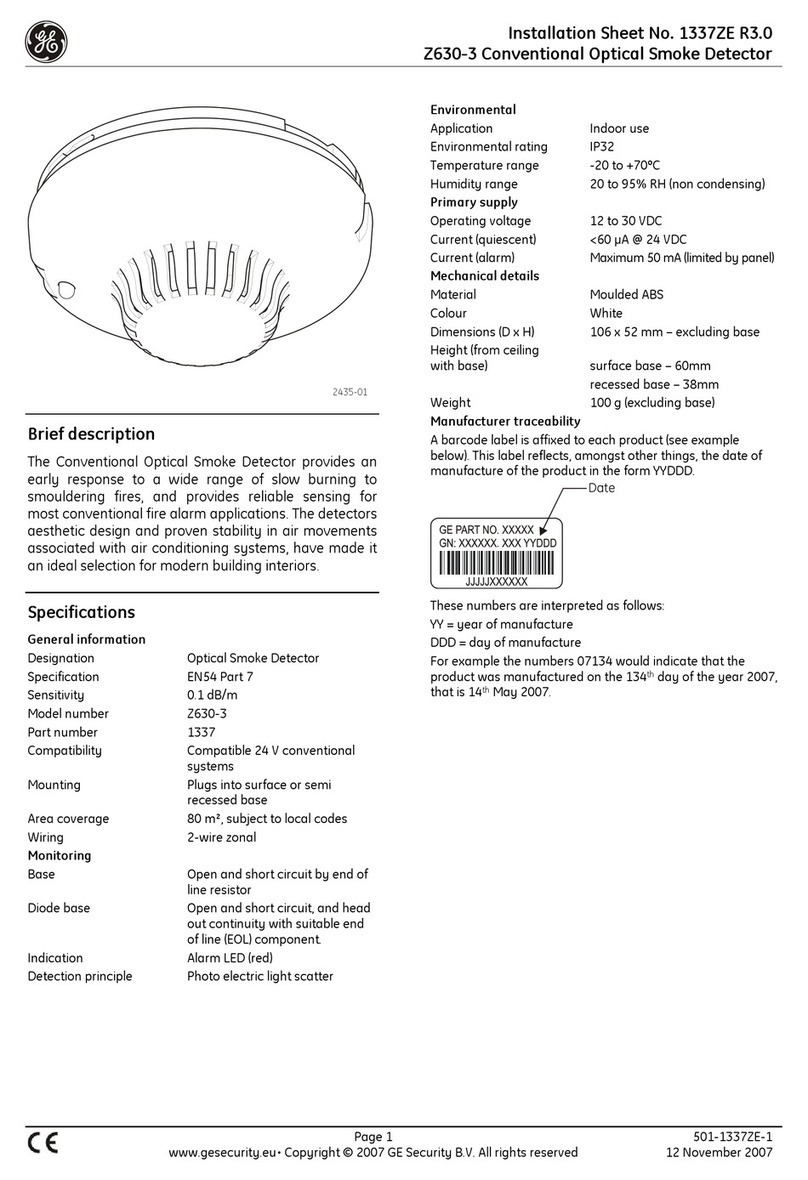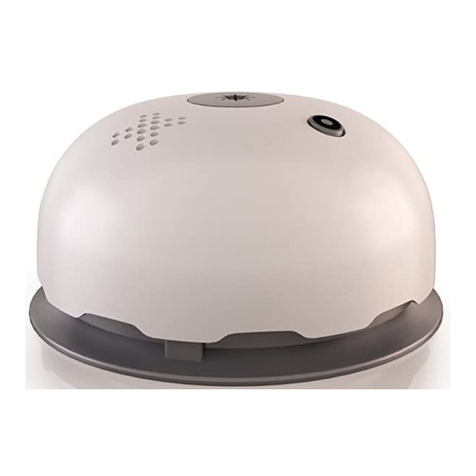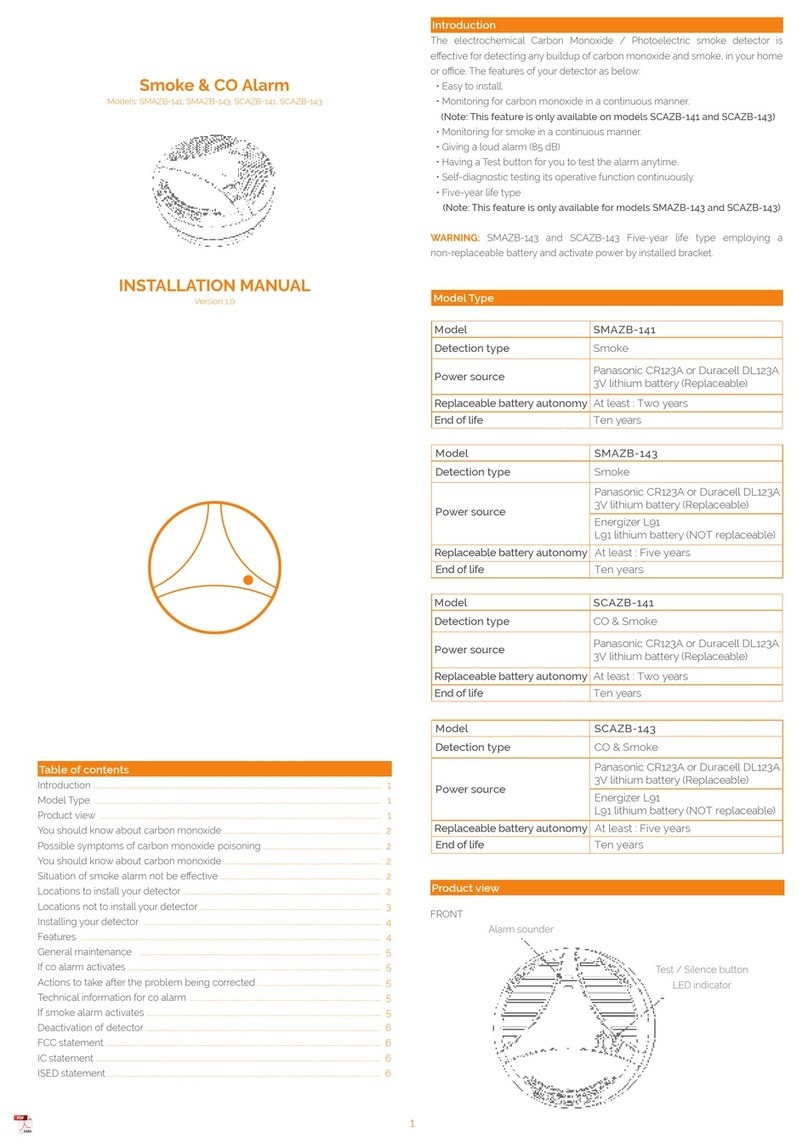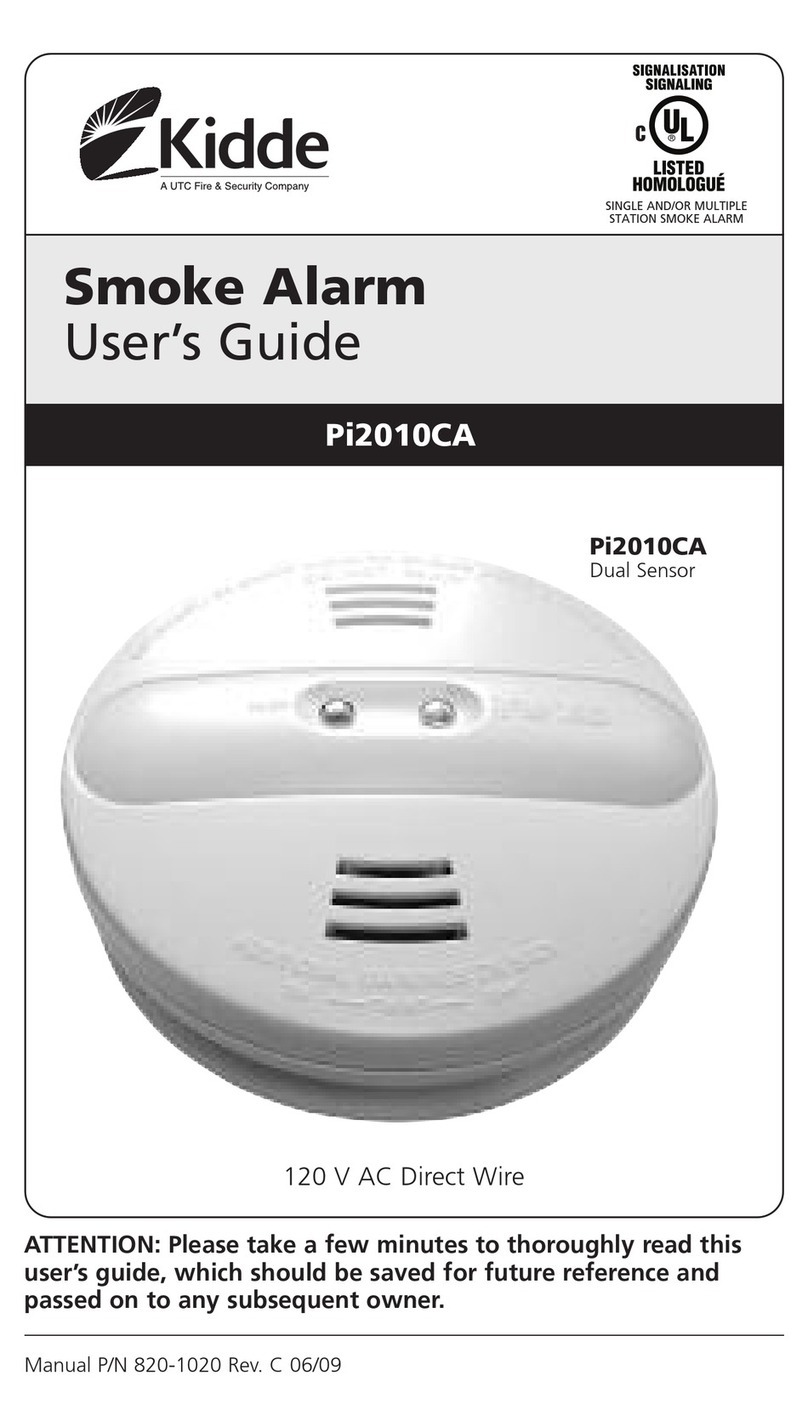GE Security FHSD700C Series Product Guide
2.2 Alarms and Trace Mode
The default settings of the four alarm states (Alert, Action, Fire1 and Fire2) and Trace are shown in the
following table. The Trace threshold is only applicable to detectors FHSD724DC to FHSD7215DC,
which have a rotary valve.
Table 2-1: Default Behavior of Alarm States and Trace Mode
Level Latched / Unlatched Threshold Delay Beacon Pulse (On:Off) Sounder
Trace Latched 0.03% obs/m 3 secs - Continuous
Alert Latched 0.04% obs/m 3 secs 0.5 secs : 2 secs Continuous
Action Latched 0.06% obs/m 3 secs 0.5 secs : 1 sec Continuous
Fire1 Latched 0.08% obs/m 3 secs 0.5 secs : 0.5 secs Continuous
Fire2 Latched 0.1% obs/m 3 secs Continuous Continuous
Trace parameters apply when the rotary valve is in the Overall position and all sectors are being
monitored. If latched, the Trace indicator will remain illuminated after the initiating event has ceased. It
does NOT mean that the unit will continue indefinitely in Trace (scan) mode. The system will only
continue in Trace mode if the detected smoke level is above the Trace threshold after scanning. The
Alert relay may be programmed to be activated by the Trace threshold. Its action will then follow that of
the Trace indicator.
If any alarms are unlatched, all resultant actions (relay contacts, display panel indicators, sounder and
beacon) will clear if and when the triggering event ceases. If it is latched, all the warning mechanisms
are maintained until action is taken by the user (please see Detector Display Panel on page 3). These
alarm states are global and will be set depending on the smoke density being measured, regardless of
which sector is being sampled. Once in Trace mode, each sector has an alarm indicator associated with
it. These individual sector alarms pulse progressively, depending on the degree of alarm status, in the
same way as the Beacon (please see Default Behavior of Alarm States and Trace Mode on page 3).
2.3 Detector Display Panel
All FHSD700C detectors (except for the FHSD720C and FHSD721C) can have a full display panel or a
blank panel fitted to the main system. The FHSD720C and FHSD721C have no display but can be
connected to a remote display unit via RS485 communications from the Main I/O module. The display
panel is used for annunciating the detector status and smoke levels, and can also be used to configure
the detector.
The display consists of a range of configuration and control buttons (Item 1 in Figure 2-1) and LEDs to
indicate Alarms, Faults, Power, Reset and other operational status (Items 5 and 6 in Figure 2-1). When
configuring the detector via the display panel, some of these configuration and control buttons will have
a dual function to allow the user to enter parameter values, scroll through configuration items, or enter
an Access Code. Alternate functions are indicated by LEDs located above the buttons (Item 3 in Figure
2-1) and are activated when the associated button can be used for the alternative function.
More information about button functionality, Access Codes and how to setup the detector with the Main
Menu can be found in Setup and Button Functionality on page 18. A flowchart illustrating how to
navigate through the display panel can be found in Appendix A Display Panel Navigation on page 35.
www.gesecurity.net 3
